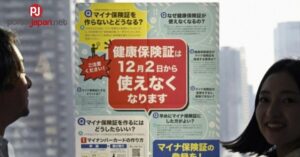
The Filipino diaspora (a community of foreigners and people of foreign descent) living in Japan is becoming the ideal epitome of the “Filipino immigrant.” However, it is also noteworthy that despite progress in assimilation and integration, there are also stories of alienation and isolation.
The recent movement to “leave one’s hometown and seek a new world” is truly a “double-edged sword” situation. However, Japan is pursuing “Kokusaika (internationalization)” (improving international understanding of Japan/exposing Japanese people to foreign cultures) and “Tabunkakyosei (multicultural coexistence)” (broader and more responsive to multicultural issues). This makes it far more welcoming than other countries, which can be hostile to foreign immigrants on first encounter.
In the 1980s, most Filipinos who began entering Japan were “migrant workers.” However, over time, they have become “permanent residents”, ranking next to China and South Korea.
Considering the events in the central region over the past six months, there seems to be a growing sense of optimism regarding the identity and role of Filipinos globally in the 21st century.
In the Chubu region, which is under the jurisdiction of the Philippine Consulate General in Nagoya, “Filipino Community Central Japan (FCCJ)” was formed, the first comprehensive Filipino community organization in this region. This will lead to the revival of the “spirit of community unity and cooperation” that is originally rooted in the villages of the Philippines.
At “Pasko in Nagoya 2023,” an event for Filipinos living in Japan, FCCJ invited Hideaki Omura, Governor of Aichi Prefecture, and Takashi Kawamura, Mayor of Nagoya, as special guests. This confirms that both internationalization and multicultural coexistence are alive and well. We hope that through multicultural coexistence, the Filipino community in the Chubu region will become more vital and become a “strategic pillar” of Japanese society.
I have an optimistic view of the internationalization and multicultural coexistence surrounding the Philippine community. A good example is the recent exhibition held in Nagoya on the theme of multicultural coexistence between the Philippines and Japan.
We hope that by collaborating with the Japan International Cooperation Agency (JICA) “Multicultural Program,” we will be able to better integrate Filipinos living in Japan into Japanese society.
These series of initiatives can be said to be a kind of “blueprint” for constructive cooperation between the Filipino community in Japan and those involved in Japan’s internationalization and multicultural coexistence.
(Consul General of the Philippines in Nagoya Roy B. Ecraela)
















Join the Conversation